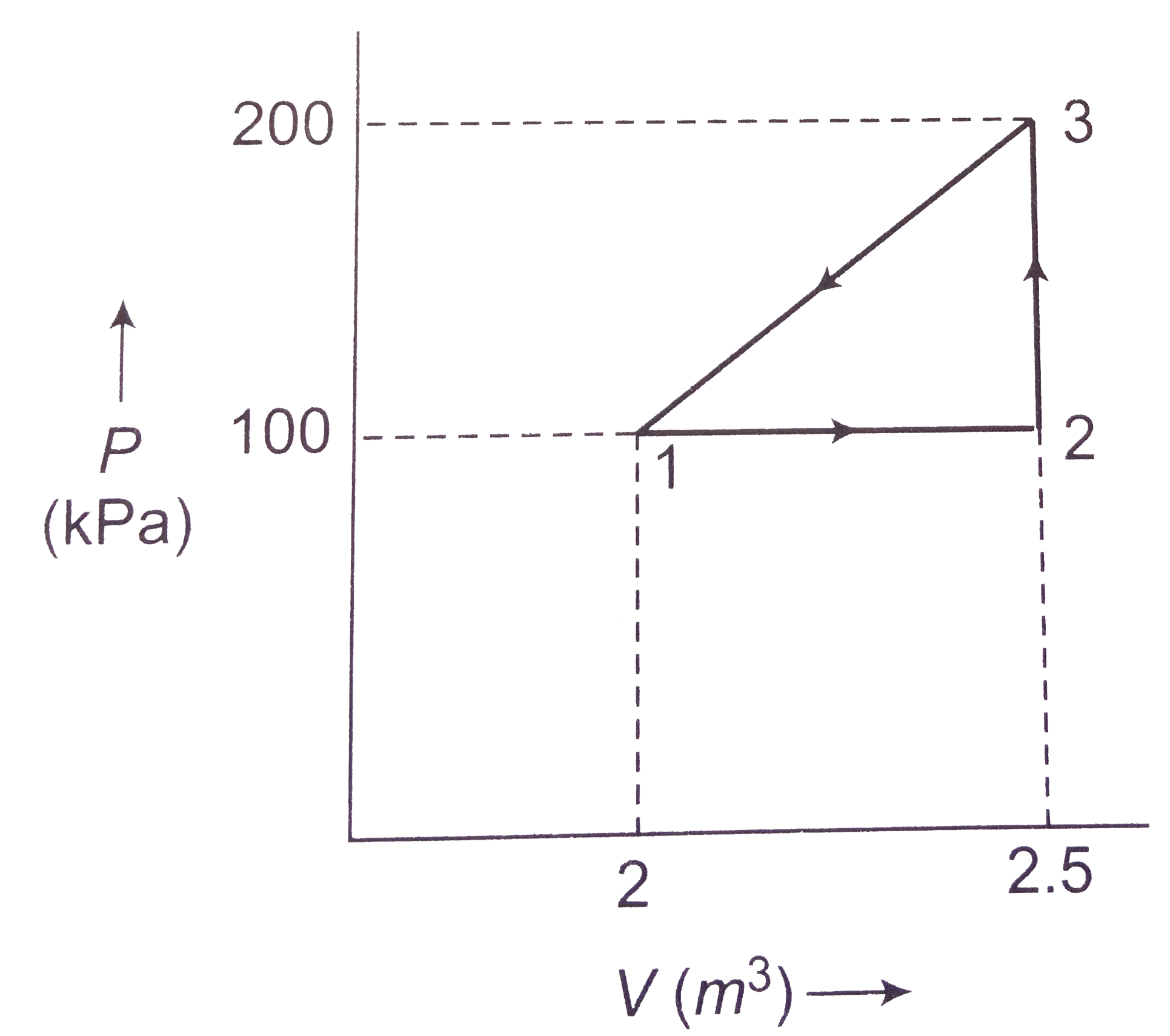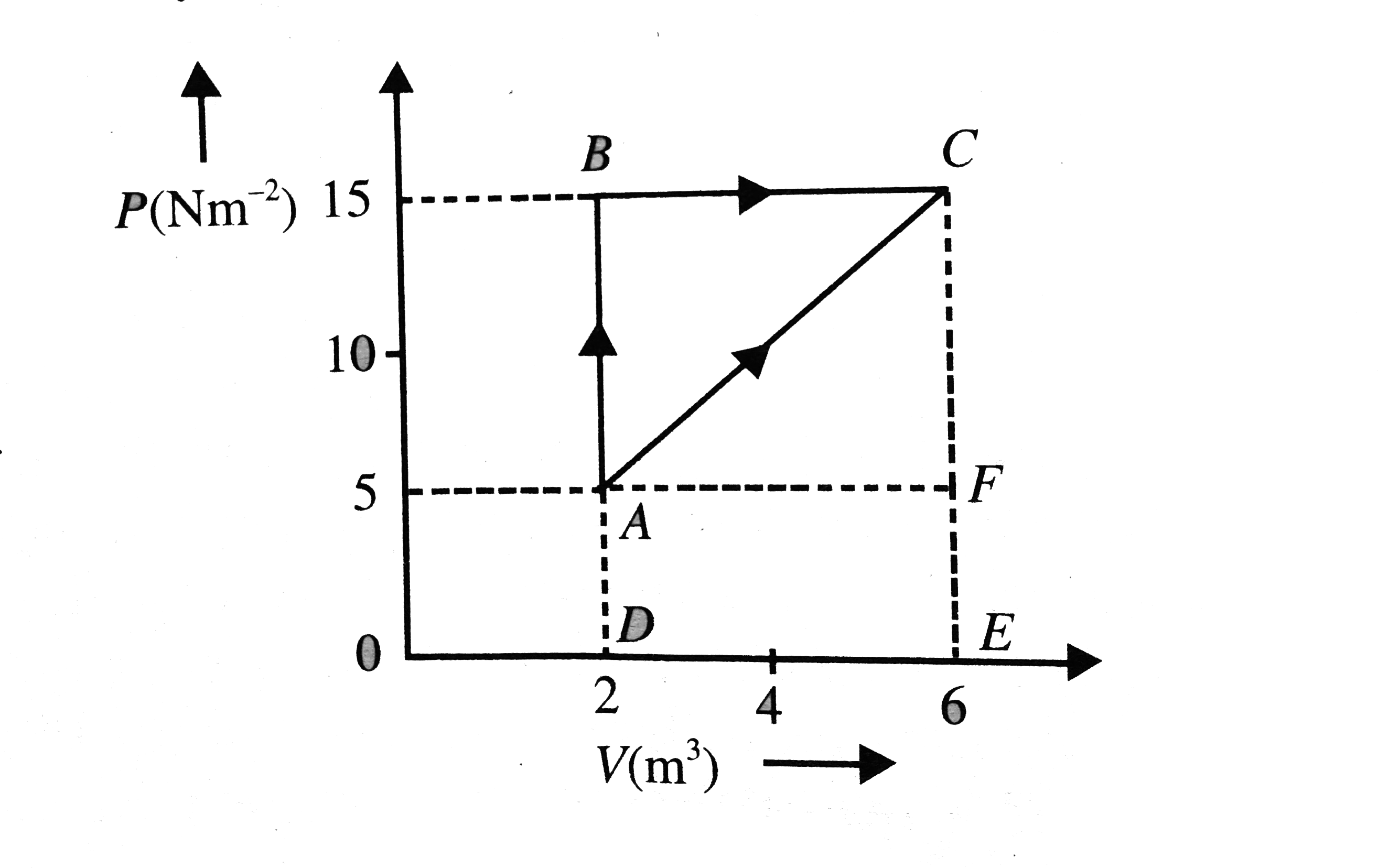Give the appropriate reason for the followings:
a. It is a preferable to determine a change in enthalpy than change in internal energy.
b. It is necessary to define the 'standard state.
c. It is necessary to specify the phases of the reactant and products in a thermochemical equation.
a. This is because of the reason that most of the possesses are carried in open containers i.e. at constant pressure. Since the volume can change, therefore the changes in heat energy are enthalpy changes (ΔH) and not internal energy change (ΔE). Therefore, it is preferable to determine a change in enthalpy than change in internal energy.
b. Yes, standard state, specifies P and T condition. If it not mentioned than temperature and P conditions are not known.
c. Physical states of all species is important. and must be specified in a thermochemical equations as ΔH depends on the phase of the substances. For two states of water in following two equations value of ΔrH is different
2H2(g)+O2(g)→2H2O(g),ΔH=−483.7kJ
2H2(g)+O2(g)→2H2O(l),ΔrH=−571.1kJ
Topper's Solved these Questions
- NCERT BASED EXERCISEBOOK - CENGAGE CHEMISTRYCHAPTER - NCERT BASED EXERCISEEXERCISE - Chemical Equilibrium
72 Videos
- NCERT BASED EXERCISEBOOK - CENGAGE CHEMISTRYCHAPTER - NCERT BASED EXERCISEEXERCISE - Atomic Structure
94 Videos
- ISOMERISMBOOK - CENGAGE CHEMISTRYCHAPTER - ISOMERISMEXERCISE - Assertion-Reasoning Type
1 Videos
- ORGANIC REACTION MECHANISMBOOK - CENGAGE CHEMISTRYCHAPTER - ORGANIC REACTION MECHANISMEXERCISE - Analytical and Descriptive
6 Videos
Similar Questions
Given the following diagram for the reaction A+B→C+D The enthalpy change and activation energy for the reverse reaction, C+D→A+B are respectively.

View SolutionTwo cyclinder A and B of equal capacity are connected to eachother via a stopcock. The cyclinder A contains an ideal gas at standard temperature and pressure, while the cyclindr B is completely evacuated. The entire system is thermally insulated. The stopcock is suddenly opened. Answer the following:
(a) What is the final pressure of the gas in A and B?
(b) What is the change in internal energy of the gas?
(c ) What is the change in temperature of a gas?
(d) Do the intermidiate states of the system (before settling to the final equilibrium state)lie on its P−V−T surface?
View Solution
Knowledge Check
In the balanced equation for the combustion of 1 mole of benzoic acid, C6H 5COOH(s) at temp. T, the difference between enthalpy change and internal energy change is equal to
A−RT2B−32RTC52RTDRT2Consider the following statements:
I. Change in enthalpy is always smaller than change in internal energy.
II. The variation in enthalpy of a reaction with temperature is given by Kirchhoff's equation.
III. The entropy change in reversible adiabatic process is equal to zero.
Select the correct answer.AI and IIIBII and IIICIII and IDall are correctIf 'm' g of fuel is completely burned and that heat energy is supplied to 'M' g of water to raise its temperature by Δt∘C then arrange the following steps in a sequences to calculate the calorific value of the fuel
(a) Determine the heat energy absorbed by water
(b) Determine the calorific value by dividing heat energy produced with mass of the fuel
(c ) Note down the amss of water specific heat capacity and change in temperature of water
(d) Heat energy absorbed by water is equal to heat given by the guel after complete combustionAacbdBadcbCcadbDcdba
No chemical reaction takes place when granules of a rusty brown solid A are mixed with the powder of another solid B. However, when the mixture is heated, a reaction takes place between its components. One of the products C is a metal and settles down in the molten state while the other product D floats over it. It was observed that the reaction is highly exothermic.
(a) What could the solids A and B be ?
(b) What are the products C and D most likely to be ?
(c) Write the chemical equation for the reaction between A and B leading to the formation of C and D.
Mention the physical states of all the reactants and products in this equation and indicate the heat change which takes place.
(d) What is the special name of such a reaction ? State one use of such a reaction.
(e) Name any two types of chemical reaction under which the above reaction can be classified.
View Solution
In the figure an ideal gas changes is state from state A to state C by two paths ABC and AC.
(a) Find the path along which the work done is least.
(b) The internal energy of the gas at A is 10 J and the amount of heat supplied to change its state to C through the path AC is 200 J. Calculate the internal energy at C.
(c) The internal energy of the gas at state B is 20 J. Fid the amount of the heat supplied to gas to go from A to B.
View SolutionFigure. Shows an ideal gas changing its state A to state C by two different path ABC and AC.
a. Find the path along which the work done is the least.
b. The internal energy of the gas at A is 10J and the amount of heat supplied to change its state to C through the path AC is 200J. Find the internal energy at C.
c. The internal energy of the gas at state B is 20J. Find the amount of heat supplied to the gas to go from state A to state B.

View SolutionIn the given figure, an ideal gas changes it state from A to state C by two paths ABC and AC.
(i) Find the path along which work done is the least.
(ii) The internal energy of the gas at A to 10J and the amount of heat supplied to change its state to C through the path AC is 200J. Calculate the internal energy at C.
(iii) The internal energy of the gas at state B is 30J. Find the amount of heat supplied to the gas to go from A→B.

View SolutionGive reason for the following :
a. The first ioisation eathalpy of carbon carbon is greater than that foboron, whereas the reverse is true fore the second ionisation enthalpy .
b. Solid carbon dioxie is known as dry ice .
c. Why does not silicon form an analogue fo graphite ?
View Solution
